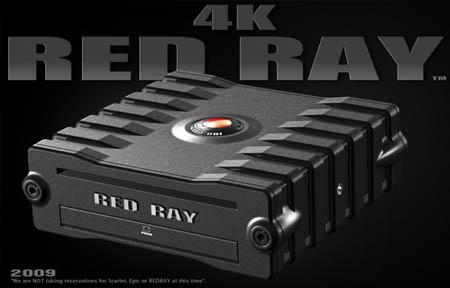Red Ray Player demoed at NAB

The 2009 NAB expo has wrapped up, and one of the more interesting products demoed to a small group has to be REDs Red Ray Player, a $1000 playback device that will display 4K resolution video from standard DVDs. To give you an idea of the resolution, most cinemas currently project film at 2K resolution, which is 2048 lines of horizontal resolution, or about twice as much as 1080p.
What makes the Red Ray player even more impressive is not the resolution, but it’s compression technology, uses wavelets to describe an image as a mathematical formula, and can either be lossy or non-lossy. According to people at the NAB demo, the lossy compressed footage was pretty much indistinguishable from the uncompressed, while achieving a 700:1 compression ratio, making the file size half the size of a Mini DV file of the same running time.
Since I can’t pretend to understand the ins and outs of wavelet compression, here’s some fun numbers to look at. Maybe that 21:9 TV is looking like a good idea after all.




~Maybe that 21:9 TV is looking like a good idea after all~
Hey, new ideas beget new ideas, and maybe the 21:9 AR will be the new standard…I hope so
In all seriousness, I doubt it. The difference in picture size is minimal, when compared to the difference between 4:3 and 16:9. That combined with the limited content available at 21:9 and how horribly small 4:3 would look on this makes it more of a niche product than anything else.
http://www.imdb.com/Sections/DVDs/AspectRatios/
(though I think this is a bit out of date)
Well obvously…and Paul’s Cost-to-size comparison from the earlier post proves that getting the picture size you want on a 16:9 that matches the 21:9 is really, really easy…plus you’ll have all that extra real estate for other aspect ratios.
21:9 serves one purpose: A main screen for a dedicated movies-only home theatre (which would be better served by a projector).
Yep, I agree, and even then as a dedicated movie-only device, a LOT of films are going to have black columns on the side as opposed to the traditional letterbox.
There are over twice as many 1.85:1 movies as there are 2.35:1 (which almost 21:9)